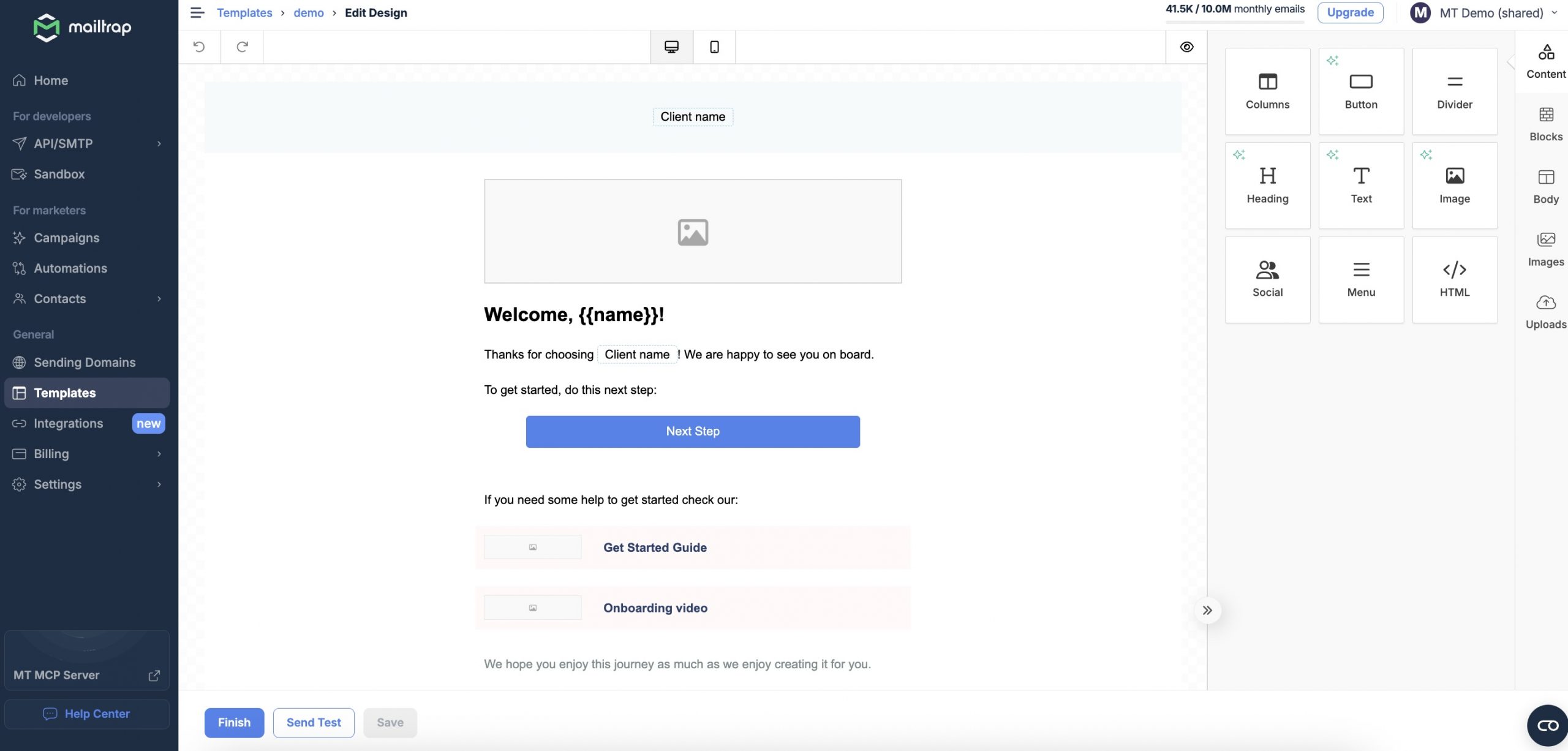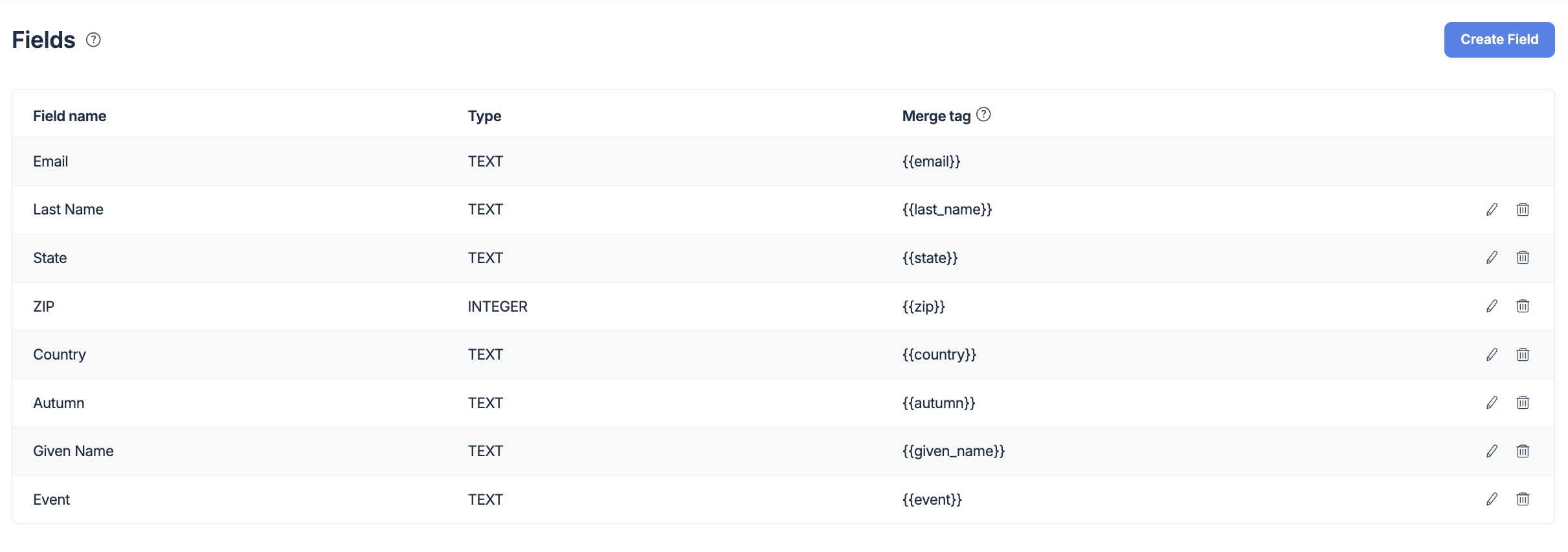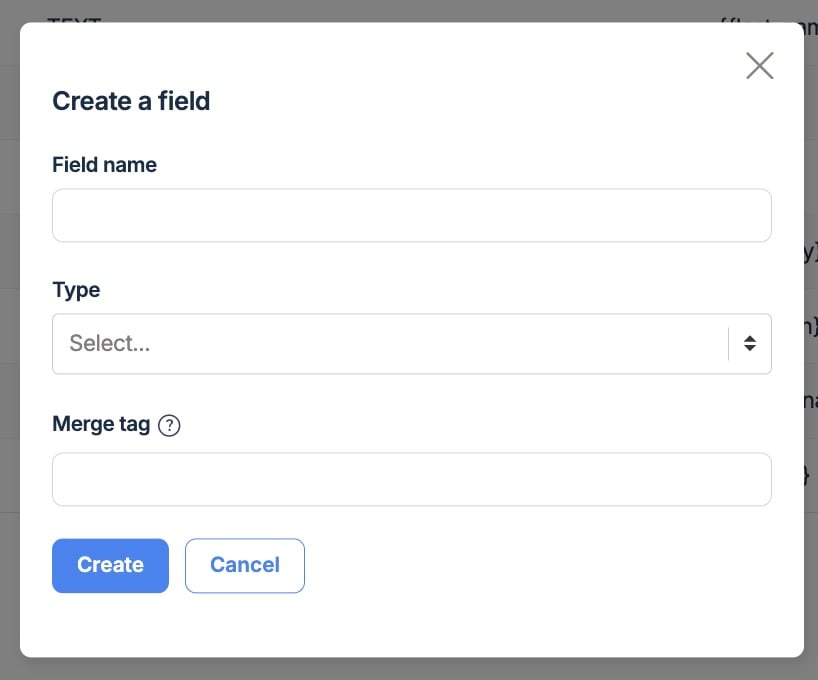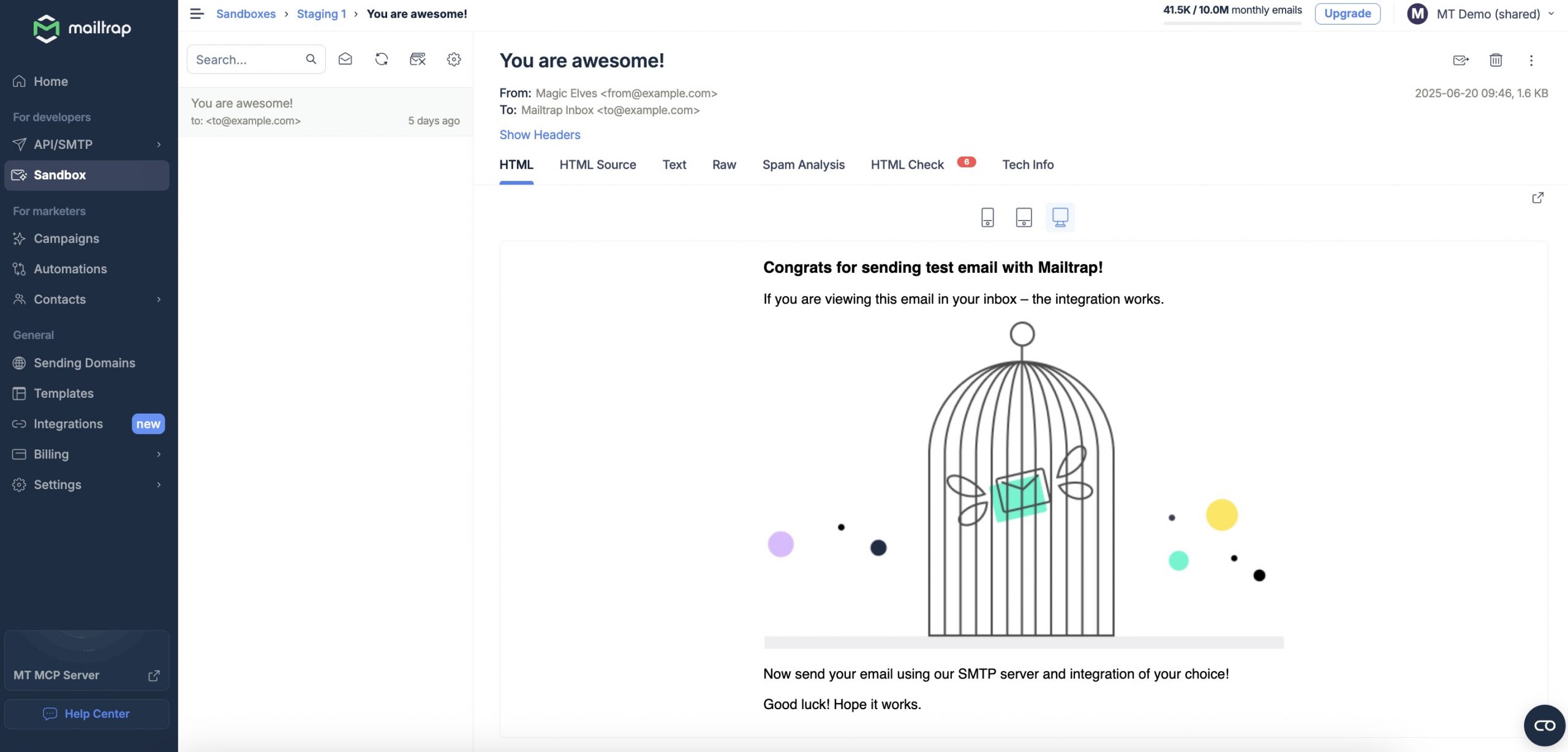Can you imagine being a VP at a large corporation and reaching out to each of your customers directly? Bankers or insurance associates do it all the time, and somehow, they manage to personalize each of the thousands of messages they send. Are they superhumans? Some might be, but most of them probably just use the good ol’ mail merge feature.
In today’s blog post, we’ll explain mail merge and all the peculiarities associated with it. We’ll also provide tutorials on creating a mail merge in MS Office, Outlook, Google Docs Editors, and Gmail. So, let’s get started!
What is mail merge?
Mail merge is a method of building personalized letters, documents, or emails with a bit of automation. Two components necessary for a mail merge are:
- A template of a letter, document, or an email with specific placeholders in the body
- A spreadsheet with a set of data that should replace placeholders for each individual recipient. These can be names, addresses, or any other custom data. Some tools even allow for sending personalized attachments with emails.
A mail merge functionality combines these two components into one piece – a message personalized with data relevant to you and you only.
Mail merge example
Very often, when you receive a letter from a company or an institution, you’ll see your name and address printed on it. It will often start with “Dear John,” unless your name is Suzie, then you’re likely to see “Dear Suzie.”
In the body, you’ll find some seemingly personalized references to your actions or further mentions of your personal details. In many languages, you’re likely to see gender-specific expressions.
The same goes for emails. Whenever someone reaches out trying to sell you something, their email will probably look like this:

Another email from this series would look something like this:

Thousands of emails like this can be sent within just minutes. But no one would bother writing each of these emails and inserting details one by one. Instead, they delegate this mundane task to mail merge.
The result? Emails that look fairly personal and have a higher chance of convincing a recipient to take the desired action.
What are the use cases for mail merge?
Mail merge has been in use for many years, even before the internet changed how we do many things. It’s omnipresent both in offline and online worlds. Typically, it’s used whenever it’s necessary to combine a form letter with personalized variables.
The most common mail merge use cases include:
- Emails – usually used for mailing large recipients lists. With mail merge, you can populate an email template with personalize variables by inserting the required information from a data source;
- Paper letters – used for snail mail. The contents, designs, and fonts will be the same throughout the letters, while the names, postal addresses, greeting lines, and other variables will be personalized. Once the data is merged, you can print your letters and mail them to the recipients.
- Envelopes, print labels, and address labels – similar to paper letters, you can also create a bunch of envelopes, print labels or mailing labels, and address labels with custom data. These are particularly useful if you’re sending packages to your customers.
- Directories – used for creating directories, catalogs, or lists of customers. Mail merge allows for combining different types of data sources into a single new document.
Which tools to use for mail merge?
If you’re using Microsoft Word, Excel, Google Sheets, or Google Docs, you can easily send personalized emails from Gmail or Outlook. However, the mail merge process can be a bit limited with direct methods (for example, you can’t add attachments or Cc/Bcc fields). Instead, you can opt for various add-ons that will make your life easier and provide access to more functionalities.
Here are the most popular user choices:
- Charge for Outlook – a powerful plugin designed for Outlook and a great alternative to Mail Merge. With Charge, you can send up to 1,000 personalized emails per campaign, customize each email using variables, preview them before sending, and track reply rates. If you’re looking for an easy and efficient way to manage email outreach from Outlook, Charge is the best solution.
- GMass – a popular plugin for Google Chrome that comes with mail merge capabilities, but it does much more than that. With it, not only can you quickly create personalized emails for your recipients, but you can also schedule them to be sent at a specific time and set up automatic follow-ups. GMass also allows for tracking opens and clicks, so it makes a pretty decent cold email platform.
- Mailmeteor – another popular plugin that offers a feature for personalizing emails and sending even 2,000 of them in a single day. Like the previous entry, it works with Gmail and comes with an email performance tracking functionality. On top of that, with this tool, each email can be previewed to avoid any trouble (and trust us, errors do happen).
- Mail Merge Toolkit – a Microsoft Office add-in that enhances Outlook, Word, and Publisher with mail merge capabilities. It allows you to send RTF or HTML emails with attachments. At the same time, Mail Merge Toolkit reduces the chances of receiving false responses.
- YAMM – Yet Another Mail Merge, as its creators claim, is “the world’s most popular Google Sheets add-on for Gmail and G Suite users”. It comes with similar features to competitor tools, such as email tracking and scheduling. On top of that its users can also use mail merge to send emails with personalized attachments. Other advanced features of this tool include, personalizes and clickable links, as well as pre-filled forms.
- Easy Mail Merge – a tool similar to the ones mentioned so far used for mail merge in Microsoft Outlook. It comes with a standard set of features for personalizing and scheduling emails and allows its users to take advantage of automated scenarios to send personalized messages without any interference.
After listing all these tools, what’s important to note is that some of them also offer support for cc and bcc fields. This can prove especially useful for salespeople out there. Why? Well, you see, salespeople frequenly send mass campaigns to hundreds of leads at the same time. Rarely, though, there’s just one account manager responsible for each of these prospects. So, with cc/bcc in mail merge, they can add respective managers and/or their team leaders only to specific emails.
Let’s look at an example!
When creating a mail merge campaign, here is what a data source might look like:

Mike, a team leader, could be bcc’ed on multiple emails (invisible to customers) while the rest of the team could be split between emails and their email addresses placed in the cc fields. Each of the add-ons we mentioned could do the job of adding the right contacts in the right fields. Awesome, huh?
Also, if you go for a platform for sending mass emails (examples include, email marketing platforms or transactional email providers) most, if not all, also offer mail merge features. They just might not refer to this feature with the same name. Instead, you might find references to custom or dynamic fields or even to snippets.
Still, regardless of the naming, it’s all pretty much the same thing, and often, the functionality can also be replicated with various APIs without any trouble.
Should I use a plugin or a platform for mail merge?
Your choice of an online tool for mail merge really depends on your use case. So, if you’re more of a casual sender and don’t send more than 50-100 emails a day, you’ll probably be better off with a simple plugin/add-on. This way, you can get everything you need in a simple interface, sometimes even without extra expenses. We introduced some of the Gmail and Outlook add-ins above, but you can also find tools for other popular email clients.
If you, however, send newsletters, transactional emails, or other forms of mass emails – then you’ll need more than an add-on as email clients enforce strict limits on sending volume and offer minimal capabilities. Plus, sending thousands of emails from free email accounts or even Google Workspace will look suspicious to spam filters. This is due to that fact that these accounts don’t provide access to DNS records, dedicated IPs, or scalable email infrastructure, and in other words, give you limited control over your email deliverability.
A much better idea in your case is to use a dedicated marketing platform or a transactional email service provider. Nearly all of these offer mail-merge-like functionalities to personalize your emails quickly and accurately.
Take Mailtrap Email API/SMTP for example! This solution has a template feature that operates on the handlebars engine. And while it’s not your typical mail merge, Mailtrap makes it simple to send tailored marketing or bulk email campaigns at a high deliverability rate.

Here’s how the mail merge process works in Mailtrap:
Once you’ve signed up and logged into your Mailtrap account, head over to the Contacts section and then click on Fields.
Using the Create Field option, you can define variables like first name, last name, birthdate, address, and more by setting up custom fields.

For each variable, you’ll need to specify a name, choose the data type, and assign a merge tag in the provided dialog box.

After setting that up, you can easily insert these custom variables into your email templates and send your messages through Mailtrap’s email API/SMTP for reliable email delivery.
To learn more about Mailtrap email templates, tune into our dedicated video:
How to create a simple mail merge for emails
Now let’s see how to use the mail merge feature in Microsoft Office and Google Docs Editors.
Microsoft Word with Microsoft Excel as a data source
To send bulk personalized emails with mail merge, you’ll need a word processing software i.e., MS Word, MS Excel, and a mailer such as Outlook or Gmail. Keep in mind that you should have Outlook as a default email program to be able to merge to email directly from Word.
1. Open your Word document and create an email template you want to use. Type the body of the message and skip the variable data you want to personalize;
2. Now go to the Mailings tab, click Start Mail Merge, and select Email Messages. Depending on the Word version you’re using, you may see an additional field called Step-by-Step Mail Merge Wizard… You can select this if you prefer a guided setup.

3. Press Select Recipients. Here, you can either create a new list or use an existing one. The mailing list will be your data source. We’ll be using the list of recipients in the Excel spreadsheet we referenced earlier, so we’ll choose Use an Existing List… from the dropdown menu.

4. Upload your data source. Choose if you want to upload a particular sheet or an entire workbook. Keep in mind that you should group all your recipients in the same sheet. If you want to, you can also press Edit Recipients List to edit your contacts list. This will open the mail merge recipients dialog box in which you can find duplicates, filter desired recipients, set conditions, or add/remove entries in the source.
5. Now, it’s time to insert placeholders in your main document by pressing Insert Merge Field. In the dropdown menu, you’ll see the variables you defined in the Excel spreadsheet. You can also use the Match Fields feature located in the Write & Insert Fields section. That way, you’ll match the merge fields in your current document to the fields in your data source. Once you’re done, you can format the email body the way you want.

The finished email should look something like this:

6. Press Preview Results to see what your merged emails will look like. In case any of the variables are incorrectly defined or don’t exist in the data source, you’ll see an error message during the preview.
To look through each email, click the left and right arrow buttons. Press Preview Results again to exit the preview mode and make any necessary changes if needed.

7. When you’re happy with your emails, click Finish & Merge. Choose Merge to Email.

8. Define the To (choose Email to send messages to the recipients in your address list), Subject, and Send as fields. Press Email Merge to Outbox once you’re done.

Within seconds, you’ll find the emails in your Sent folder.

Microsoft Word with Microsoft Outlook contacts as a data source
The mail merge process looks quite similar when you use Outlook contacts as a data source.
The first two steps are basically the same as what we’ve already described. So, let’s skip them and proceed.
1. Press Select Recipients and click Choose from Outlook Contacts…

2. If you don’t want to email all the contacts, press Filter Recipients and filter your contacts by category or manually. Then, click OK.

3. Go ahead and insert merge fields. Make sure the field names you pick exist in the data source.
4. Next, preview your emails, and if everything looks good, hit Finish & Merge and choose Merge to Email the way we demonstrated in the previous section.
Note: Older versions of Microsoft Outlook supported mail merge directly. It was possible to select this feature from the UI. However, Microsoft 365 and even Outlook legacy versions no longer have this feature.
For more information on mail merge in Microsoft products, check out our dedicated guide. You can also refer to Microsoft documentation.
Gmail with Google Sheets as a data source
Google Workspace doesn’t have a native mail merge feature. So, you have three options if you want to enable it: use Google Docs or Google Sheets API, Apps Script, or an add-on.
Today, we’ll detail how to create a mail merge for Gmail and Google Sheets using Apps Script.
Unlike Microsoft 365, you don’t need a word processor to complete the mail merge. Instead, we’ll create a template in Gmail, populate the Google sheet with recipients’ names and addresses, and use Apps Script to personalize and send emails.
1. Create a Google spreadsheet and insert the data you want your emails to be personalized with or use an existing document/sample provided by Google. If you’re doing mail merge for the first time, we recommend using the sample as it has an Apps Script project attached to it and the mail merge feature enabled. You can find the sample here.
Note: If you’re using the sample document and you change the name of the recipient or email sent fields, make sure you update the Apps Script as well.

2. Click Extensions and then App Script to open the project and make the changes (if needed).

3. Go to your Gmail account and create an email draft. Populate the text with accurate placeholders and use double curly braces {{}} to separate them from the text. Make sure you use the exact merge field names that you have in your sheets. Don’t forget to copy the subject line.

4. Go back to your data file i.e., spreadsheet, and then click Mail Merge → Send Emails.
5. An authorization window will appear. Click Continue and sign into your Google account.

6. At this point, “Google hasn’t verified this app” window might appear. To fix it, click Advanced → Go to {project name} unsafe and give the Google sheet access by clicking Allow.
7. Go back to the spreadsheet and click Mail Merge → Send Emails once again. The mail merge window will pop up, asking you to insert the subject line of the draft created earlier. Then, press Ok.

8. If you did everything correctly, the emails will be sent to the intended recipients. You’ll see the sending date sand time in the Email Sent field in the sheet. You’ll also find the emails in your sent folder.


Keep in mind that when using this method you can’t preview your emails before sending them to the recipients. But you can modify the App Script, which gives you more flexibility. Refer to the Google documentation for more details.
Alternatively, you can install add-ons that will enable you to mail merge directly from Google Docs or Gmail.
Test your mail merge setup with Mailtrap Email Sandbox
Last but definitely not least – don’t forget to test your mail merge emails before they’re sent to customers.
Why? Well, there is a big chance that you have personally received (probably more than once) an email with a {NAME} placeholder that somehow didn’t fetch the right data.
For salespeople, this could jeopardize a chance of striking a major deal. For others, this could ruin a good first impression and completely distract recipients from a call to action.
The good news is that some platforms/tools that offer mail merge also offer features for previewing emails before they’re sent. But, if you are a user of a platform/tool that does not, or simply skip the previewing process altogether, then you will only find out if something is wrong with your email when it’s already too late.
So, to prevent such a situation, make sure you use a dedicated tool for testing emails.
Mailtrap Email Sandbox is a safe environment for testing and part of the Mailtrap Email Delivery Platform.
With Email Sandbox, you can inspect and debug emails in a staging environment without the risk of spamming recipients. It captures all the SMTP traffic within a virtual inbox and leverages a fake SMTP server.

Email Sandbox is easy to set up with its SMTP credentials, ready-made code snippets, and SDKs for different programming languages. With its help, you can preview your emails to see how various mailbox providers render the HTML content. You can also view tech info with transaction details and header values, check the spam score, and forward emails to real inboxes manually or automatically.
These features will be particularly handy for testing your mail merge emails. That way, you’ll never send “Dear {First_name}” emails to your recipients.
To start testing with Email Sandbox, all you have to do is create an account and complete a quick 5-minute setup described in detail in the getting started guide. So why not try it out?
Don’t forget to come back to the Mailtrap blog and YouTube channel for more content on Mail Merge, such as these in-depth tutorials:






